Key dates to know for the House Jan. 6 hearings
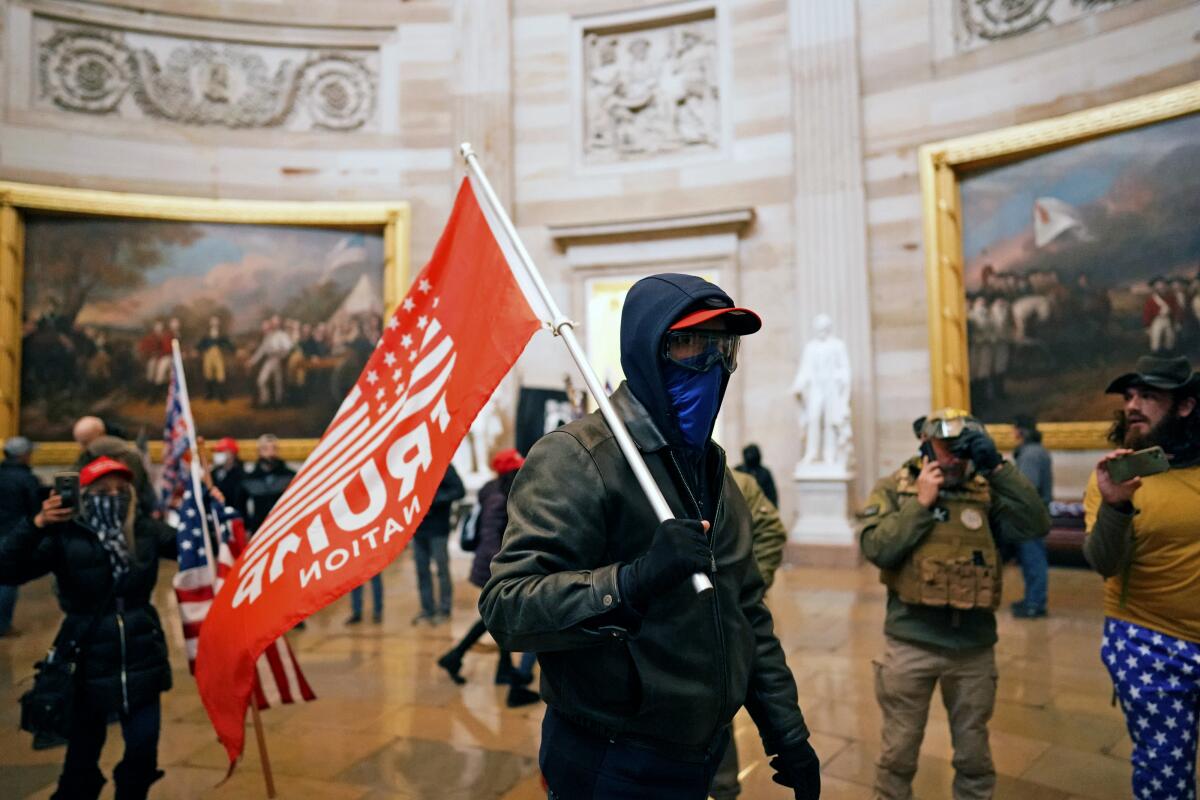
- Share via
WASHINGTON — The House select committee investigating the Jan. 6, 2021, attack on the Capitol will try to lay out a narrative over the next few weeks of hearings that outlines what led to the insurrection and what role former President Trump and his allies played in the effort to keep him in office.
Though much of the committee’s investigation has occurred behind closed doors, some of the key dates have come out through news reporting and court documents.
Here are some of the key moments from the Nov. 3, 2020, election and the Jan. 6, 2021, attack on the Capitol as the hearings begin.
Nov. 3: The election is held.
Nov. 4: In a 3 a.m. speech, Trump declares victory.
Nov. 5: Donald Trump Jr. texts White House Chief of Staff Mark Meadows that “we have operational control” to ensure his father would get a second term. He outlines a strategy that is nearly identical to what allies of the former president attempted to carry out in the following months.
“It’s very simple,” Trump Jr. says in a text message first reported by CNN. “We have multiple paths. We control them all.”
Nov. 7: Multiple media outlets predict Joe Biden is the winner.
Nov. 12: Final results from Arizona show Biden won.
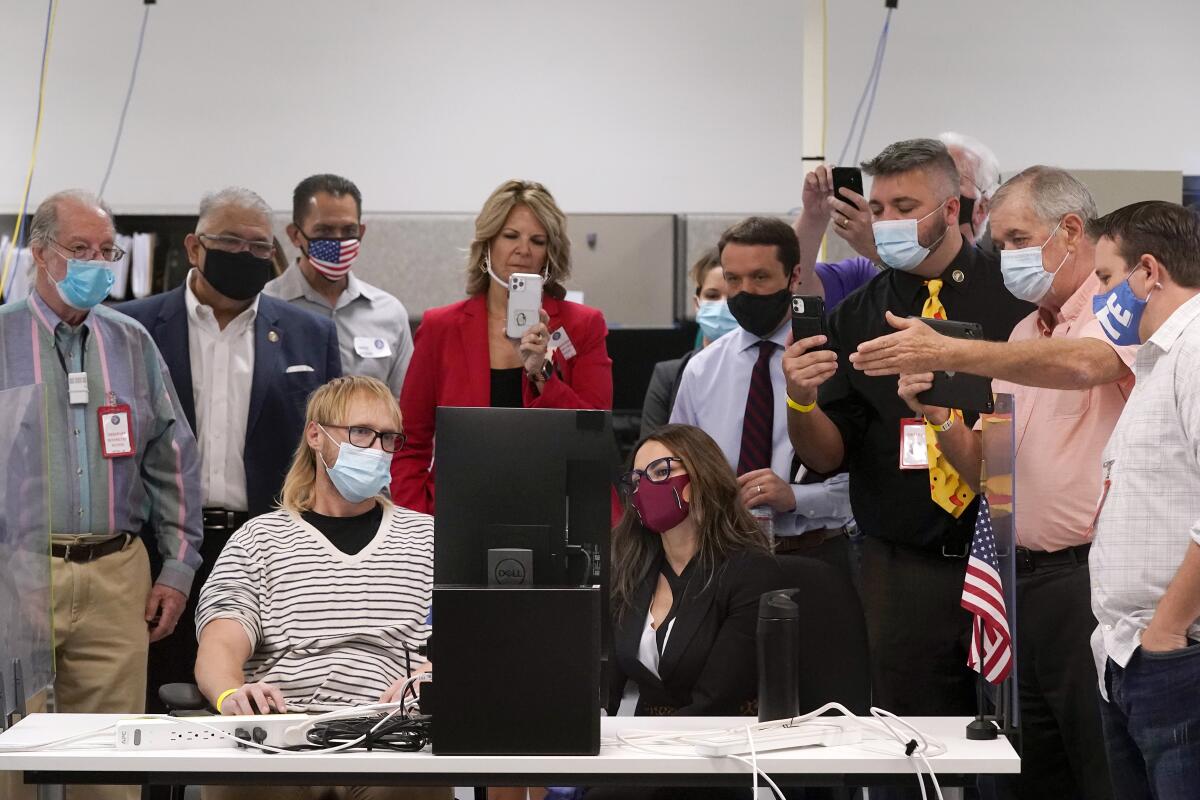
In an Oval Office meeting that included Trump deputy campaign manager Justin Clark, attorney Rudolph W. Giuliani convinces Trump to promote the theory that machines from Dominion Voting Systems changed the results of the election. Efforts to overturn the results are essentially handed over to Giuliani and election litigation experts are sidelined, the New York Times reported.
The federal Cybersecurity & Infrastructure Security Agency issues a statement confirming that there is “no evidence that any voting system deleted or lost votes, changed votes, or was in any way compromised,” and that the 2020 presidential election was the most secure in American history.
Nov. 13: Sen. Lindsey Graham (R-S.C.) calls Georgia’s Republican Secretary of State Brad Raffensperger and asks him whether he has the power to toss out all mail ballots in certain counties, according to Raffensperger.
Nov. 14: The Trump campaign prepares and distributes an internal memorandum rebutting various allegations regarding Dominion Voting Systems, reflecting its early knowledge that such allegations are baseless, according to a Senate report.
Nov. 19: At a news conference at Republican National Committee headquarters, Giuliani and fellow Trump attorneys Sidney Powell and Jenna Ellis claim there was foreign interference in the election. Giuliani tells the crowd: “I know crimes. I can smell them. You don’t have to smell this one. I can prove it to you 18 different ways.”
Nov. 21: Andrew Whitney, a British technology entrepreneur working to find election fraud, sends an email with an attached letter asking for Trump to give three private companies authority to seize election machines.
Nov. 25: Powell files her first lawsuits challenging the election results in Michigan and Georgia.
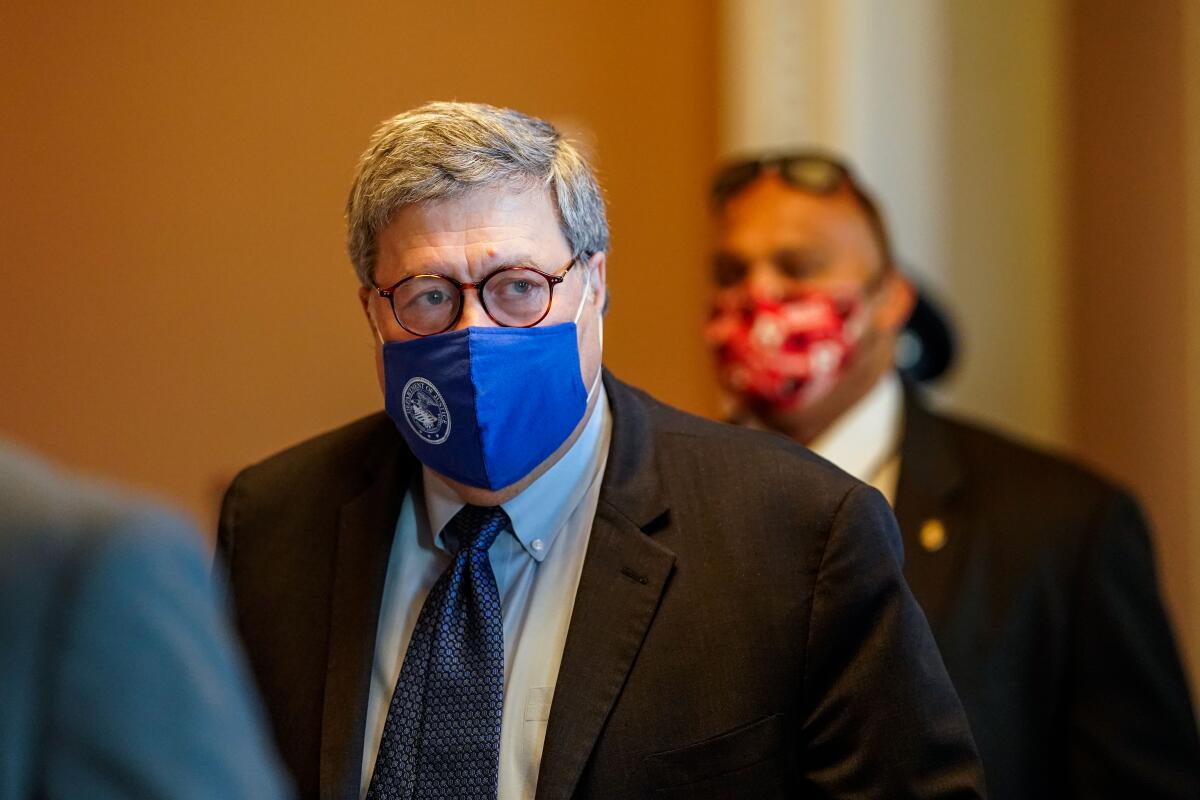
Dec. 1: Atty. Gen. William P. Barr says in an Associated Press interview that he has “not seen fraud on a scale that could have affected a different outcome in the election.”
Dec. 4: The Trump campaign files a lawsuit in Fulton County, Ga., contesting the election results. In the following days, the campaign files a slew of additional suits in several states, all of which fail in court.
The Georgia secretary of state’s office announces that it investigated Giuliani’s claims and determined they were false.
Barr calls Byung Jin “BJay” Pak, U.S. attorney for the Northern District of Georgia, to request that he make finding out more about Giuliani’s allegations a “top priority.”
Dec. 5: Fulton County Superior Court rejects the Trump campaign’s suit to overturn the presidential election results.
Trump calls Georgia Gov. Brian Kemp to pressure him to convene the state Legislature to overturn the results and appoint pro-Trump electors (Kemp declined to do so).
Dec. 6: Katherine Friess, an attorney working with Giuliani, and the Allied Security Operations Group team travel to Antrim County, Mich. to conduct a “forensic audit” that will become the main source of evidence for their false claims that the election was stolen. The audit is widely debunked.
Meadows emails Jason Miller, senior advisor to the Trump 2020 reelection campaign, to set up a meeting about alternate electors. Meadows tells Miller, “We just need to have somebody coordinating the electors for states.”
Dec. 8: Sen. Mike Lee (R-Utah) texts Meadows that there could be a path to Trump’s reelection if some state legislatures appointed alternative electors to the electoral college. Meadows responded: “I am working on that as of yesterday,” according to texts obtained by CNN.
As Trump’s allies begin pushing idea that Vice President Mike Pence could intervene, Pence receives a four-page memo he asked for from his counsel Greg Jacob detailing what authority and power he had over certifying the election result, according to Politico.
Dec. 11: The U.S. Supreme Court denies Texas’ attempt to challenge other states’ election results, saying it had no standing to challenge procedures in Georgia, Michigan, Pennsylvania and Wisconsin.

Dec. 14: The electoral college, representing certified state vote tallies, votes 306 to 232 to confirm Biden’s election and send the votes to be counted by Congress on Jan. 6.
Trump announces that Barr will soon step down as attorney general Dec. 23, putting Deputy Atty. Gen. Jeffrey Rosen in line to replace him on an acting basis.
Dec. 15: Trump hosts Rosen and Principal Associate Deputy Atty. Gen. Richard Donoghue in the Oval Office and reportedly tells them he wants the Justice Department to file legal briefs supporting Trump allies’ election lawsuits.
Trump also urges Rosen to appoint special counsels to investigate his claims, including those involving voting machine company Dominion. Rosen refuses and reiterates that Barr said there is not enough evidence for such steps.
Senate Majority Leader Mitch McConnell (R-Ky.) speaks on the Senate floor: “The electoral college has spoken, so today I want to congratulate President-elect Joe Biden.”
Dec. 18: Overstock.com founder Patrick Byrne, former national security advisor Michael Flynn and Powell spend at least four hours speaking with Trump at the White House about issuing an executive order ordering the National Guard, Department of Homeland Security or U.S. Marshals Service to seize voting machines and inspect them for fraud. They also want the president to appoint Powell as special counsel to look at the election. White House attorneys convince Trump to reject the plan.
Dec. 19: Trump announces on social media that a “big protest” would be held in Washington on Jan. 6. “Be there, will be wild!” he wrote.
Dec. 23: Chapman University law professor John Eastman begins circulating a version of his memo contending that seven states had appointed “dueling” electors
Dec. 27: Roger Stone, a longtime political advisor, and Trump meet at the president’s golf club in West Palm Beach, Fla.
In a social media post soon after their meeting, Stone wrote that he had advised Trump on “exactly how” he could remain in power and prosecute Democrats for stealing the election. The post was erased on Dec. 28.
Rosen told Trump in a phone call that he needed to “understand that the DOJ can’t + won’t snap its fingers + change the outcome of the election, doesn’t work that way,” according to Donoghue’s notes on the call. Trump asks Rosen and Donoghue to “just say the election was corrupt and leave the rest to me and the Republican congressmen.” Trump also brings up Jeffrey Clark, an assistant attorney general supportive of Trump’s claims, and potentially replacing the Justice Department’s leadership.
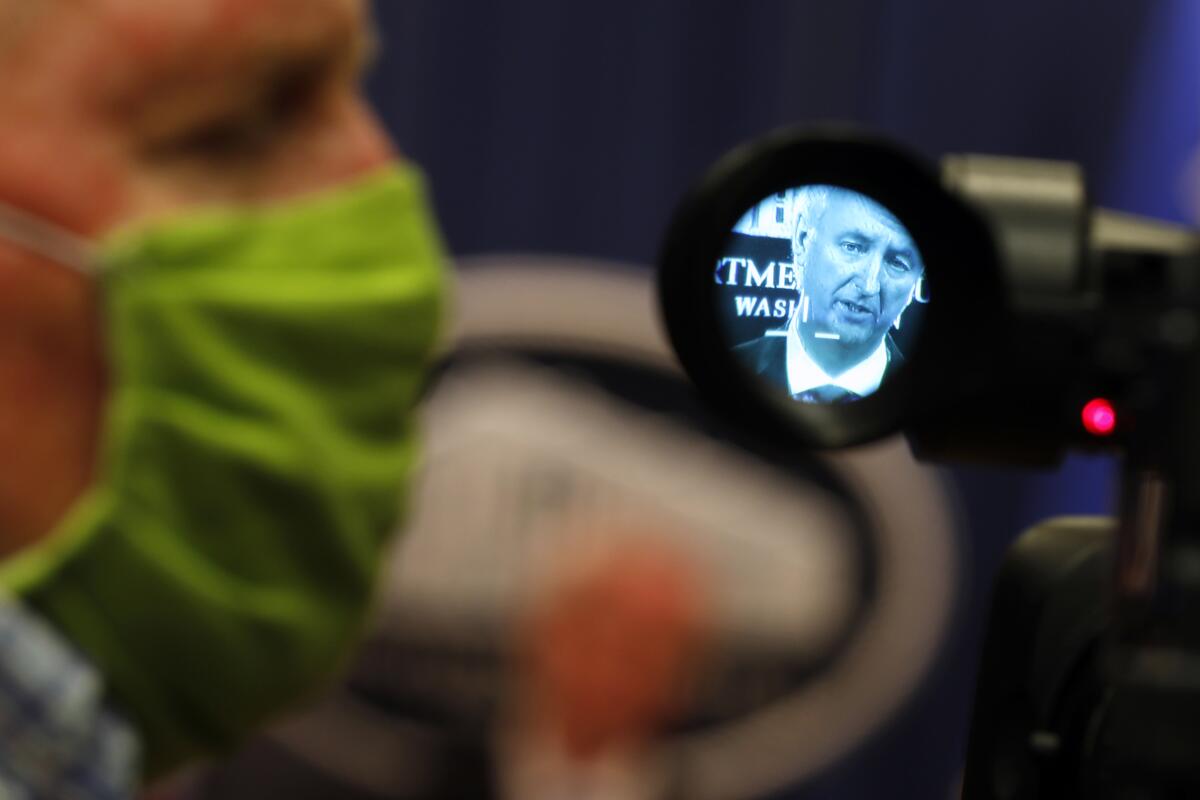
Dec. 28: Clark circulates a draft letter by email in which the Justice Department would urge Georgia’s Legislature to hold a special session based on supposed “irregularities” in the vote. The letter includes what amounts to a road map for Georgia to overturn its election results, suggesting the lawmakers might ultimately choose a new slate of electors — for Trump. Clark’s email indicates similar letters would be sent to officials in other states outlining allegations of fraud.
Dec. 30: Stone launches a Jan. 6 fundraising drive, urging supporters to help fund the rallies and pay for private security. The effort raised about $40,000, per the Washington Post.
Dec. 31: Pence asks a judge to reject a lawsuit that aimed to expand his power to help overturn the election, angering Trump.
Jan. 2: In a phone call that includes Meadows and Trump campaign attorney Cleta Mitchell, Trump demands Raffensperger “find 11,780 votes, which is one more than we have because we won the state.” Meadows is on the line.
Jan. 3: Rosen, Donoghue and Steve
Engel, assistant attorney general for the Office of Legal Counsel, meet with Trump, Clark and the White House legal team in the Oval Office. White House lawyers make it clear that Justice Department officials would resign en masse if Trump installed Clark as acting attorney general to replace Rosen, according to the Senate Judiciary Committee’s report and Rosen’s deposition.
Jan. 4: Trump and Pence meet in the Oval Office to discuss what authority Pence has, with Trump urging Pence to dismiss the electoral college votes for seven states. Also present were Pence’s chief of staff, Marc Short, and Jacob and Eastman. Eastman made the case that the most politically palatable option was for Pence to send electoral college votes back to the states, but that Pence could also just reject electors.
Jan. 5: Trump angrily vents to Pence and aides about Pence’s refusal to reject electors. He also takes the effort public, tweeting, “The Vice President has the power to reject fraudulently chosen electors.”
Jacob, Short and Eastman meet again. This time Eastman pushes Pence to reject the electors from five of the states — Georgia, Arizona, Michigan, Wisconsin and Pennsylvania —according to Jacob’s testimony to the Committee.
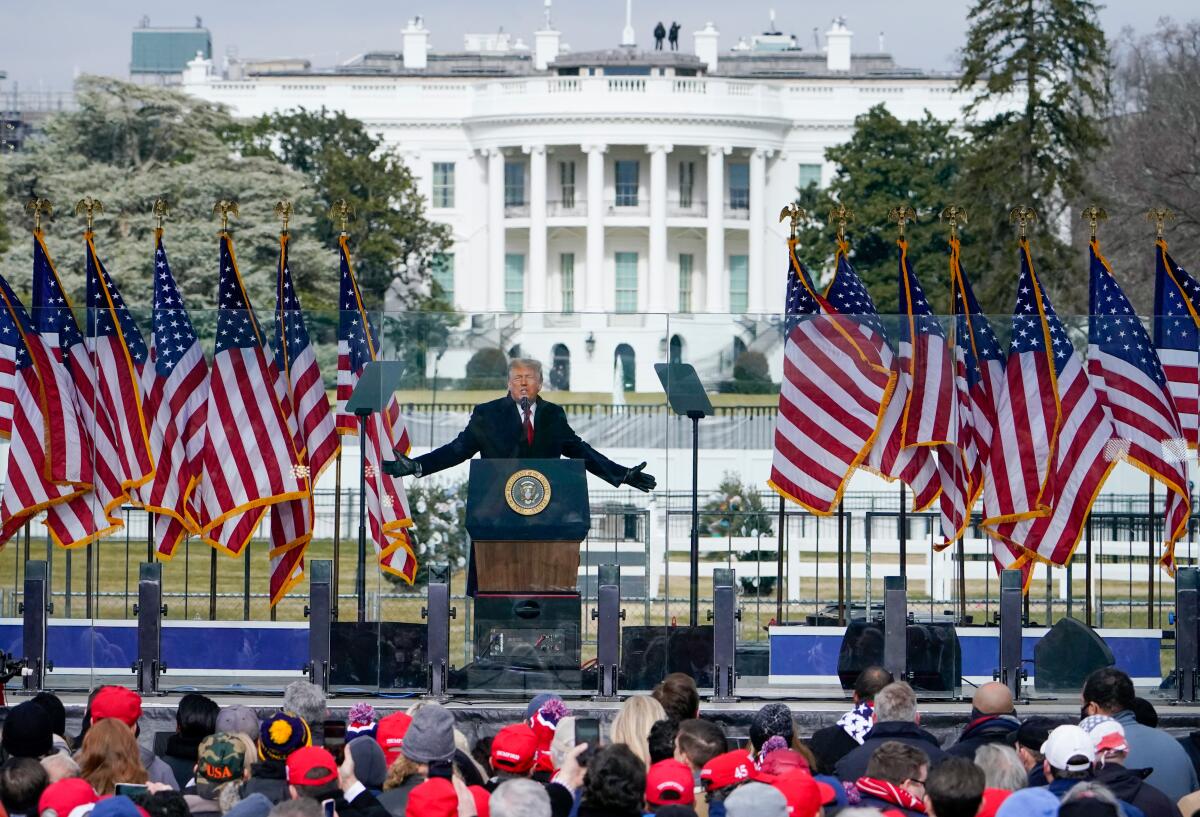
Jan. 6:
11:17 a.m. White House official phone log gap of 7 hours, 37 minutes begins, according to White House call logs published by the Washington Post.
11:20 a.m. Trump speaks on the phone with Pence. Trump stresses that Pence has authority to send the slates back to the states, and expresses disappointment he won’t use the authority.
11:57 a.m. Trump begins his speech.
12:45 p.m. Two pipe bombs are found, first at the Republican National Committee and later at the Democratic National Committee.
12:53 p.m. Capitol Police, or USCP, lose the first line on the west side of the building.
12:54 p.m. South of the first line break, protesters squeeze through a mesh fence and draw closer to the building. The rioters then overpower the USCP where the first line broke.
12:55 p.m. Rioters stream over mesh fences and metal barricades on the pathway and the surrounding lawn.
1 p.m. Pence and senators enter House chamber for joint session.
1:05 p.m. Pelosi gavels a joint session to order. Rioters have already broken through the first line of police barriers.
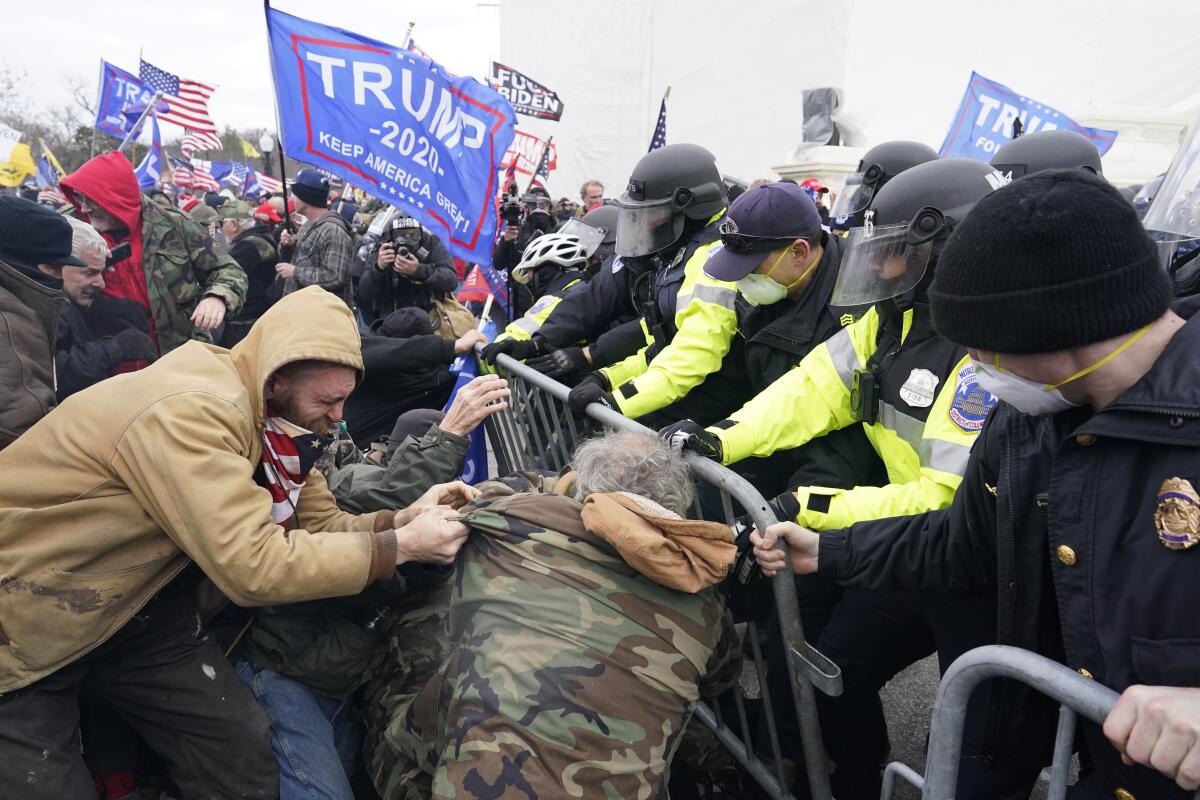
1:09 p.m. Trump ends his speech by encouraging the crowd to move toward the Capitol building. “We’re going to the Capitol,” he said. “We’re going to try and give them [Republicans] the kind of pride and boldness that they need to take back our country.”
1:26 p.m. The USCP orders evacuation of Capitol complex.
2:02 p.m. White House aide Ben Williamson texts Meadows: “Would recommend POTUS put out a tweet about respecting the police over at the Capitol — getting a little hairy over there.” He then goes to look to ensure Meadows received it. They spoke briefly, and Williamson walked with Meadows to the outer Oval Office.
2:11 p.m. Rioters enter Capitol.
2:13 p.m. Pence is evacuated from the Senate floor.
2:38 p.m. Trump tweets about the Capitol Police.
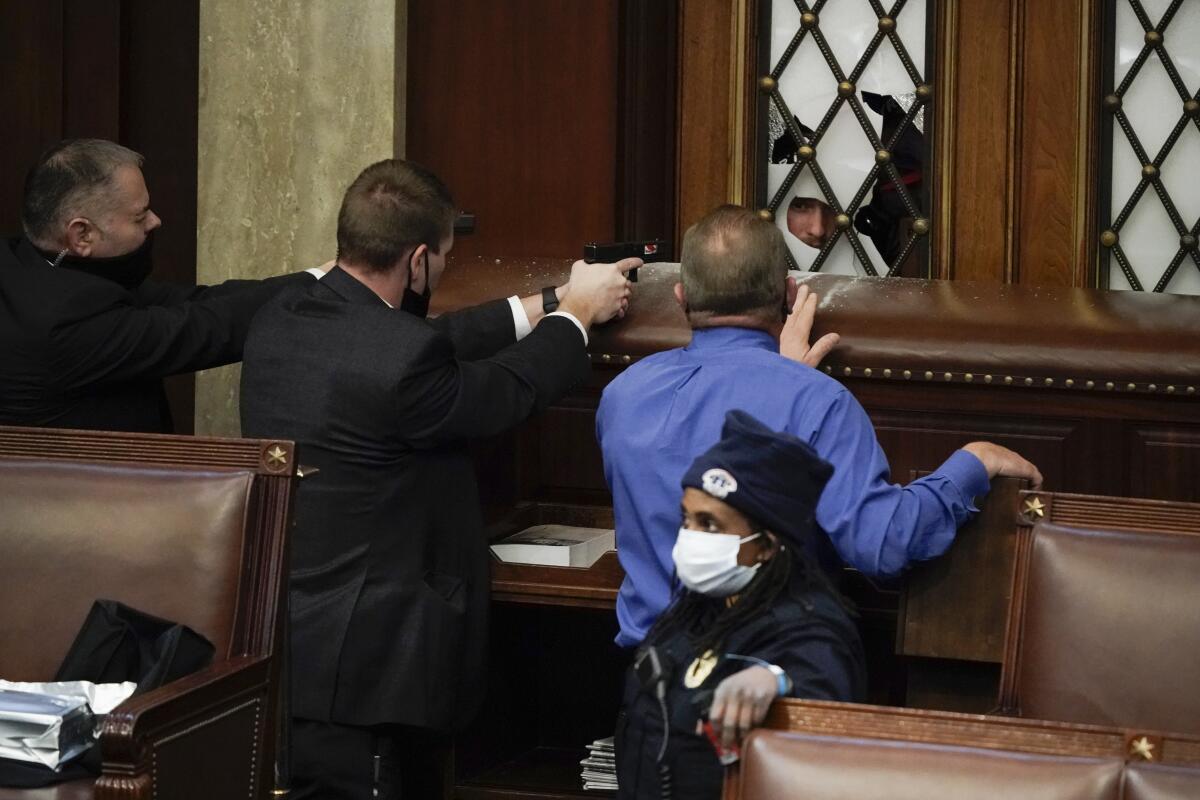
2:24 p.m. Trump tweets about Pence: “Mike Pence didn’t have the courage to do what should have been done to protect our Country and our Constitution, giving States a chance to certify a corrected set of facts, not the fraudulent or inaccurate ones which they were asked to previously certify. USA demands the truth!”
4:17 p.m. Trump releases a Twitter video statement directed to the rioters:
“I know your pain. I know you’re hurt,” Trump said. “We have to have peace. We have to have law and order. We have to respect our great people in law and order. We don’t want anybody hurt. So go home. We love you, you’re very special. You’ve seen what happens, you see the way others are treated that are so bad and so evil. I know how you feel, but go home and go home in peace.”
4:32 p.m. Secretary of the Army Ryan McCarthy approves deployment of the National Guard.
6:01 p.m. Trump sends another tweet again falsely claiming fraud: “These are the things and events that happen when a sacred landslide election victory is so unceremoniously & viciously stripped away from great patriots who have been badly & unfairly treated for so long,” Trump tweeted. “Go home with love & in peace. Remember this day forever!”
8 p.m. The Capitol is officially declared secure.
8:06 p.m. Pence gavels the Senate back into session. His first words are, “Today was a dark day in the history of the United States Capitol.”
Jan. 7: 3:44 a.m. Congress certifies Biden’s win. In a telephone call, McConnell tells Meadows he is going to acknowledge Joe Biden as president-elect.
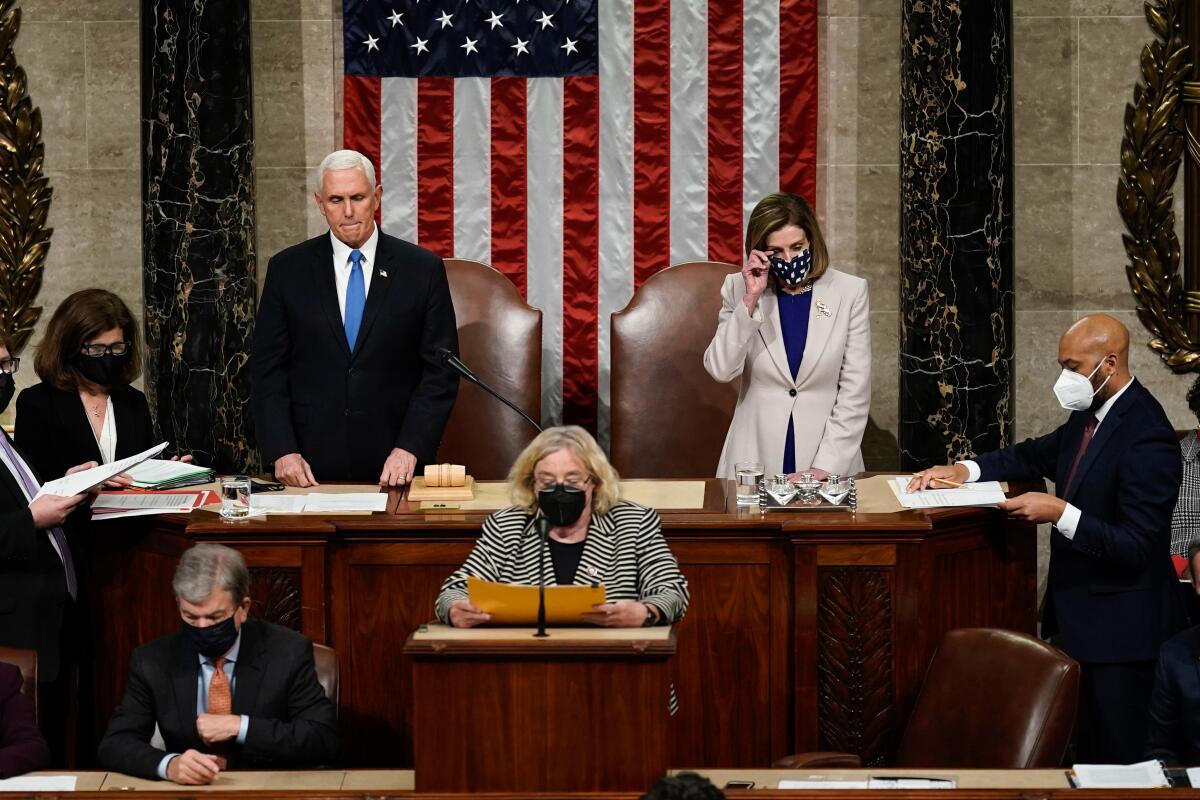
More to Read
Get the L.A. Times Politics newsletter
Deeply reported insights into legislation, politics and policy from Sacramento, Washington and beyond. In your inbox three times per week.
You may occasionally receive promotional content from the Los Angeles Times.











